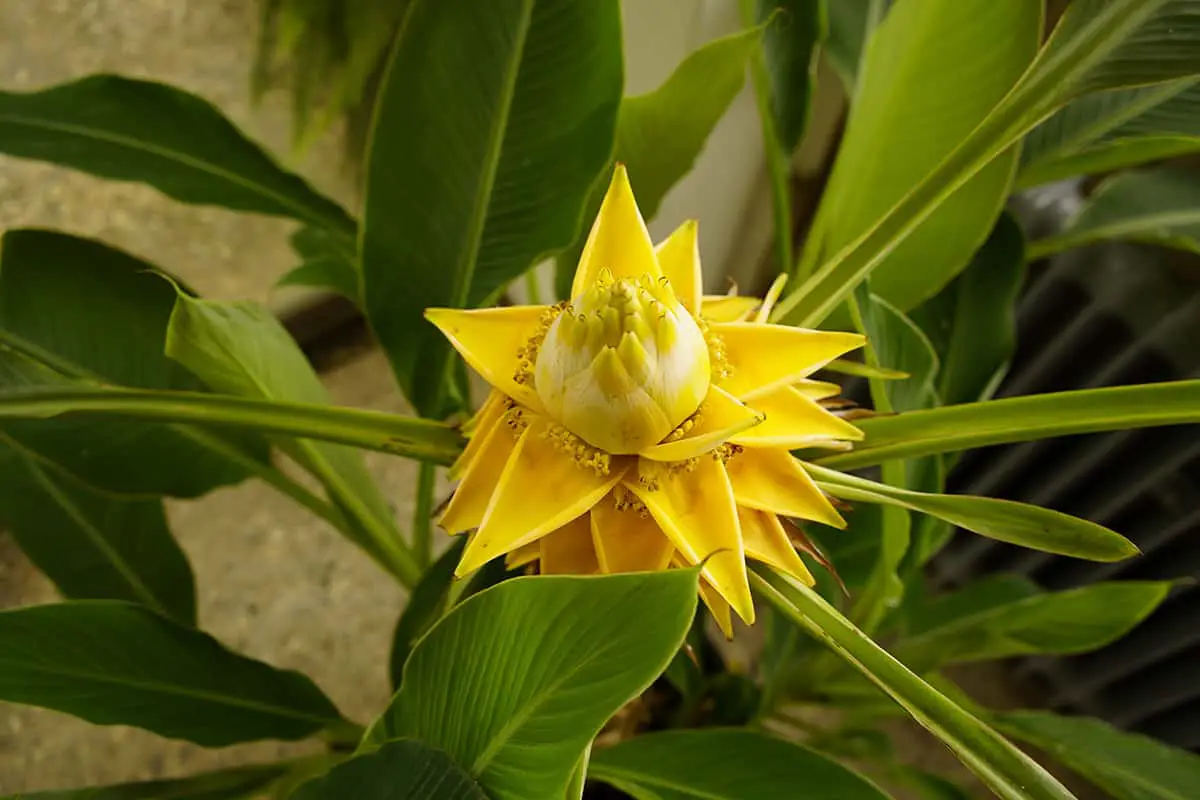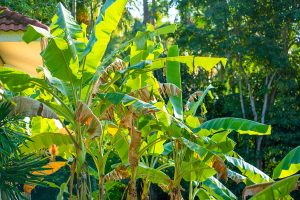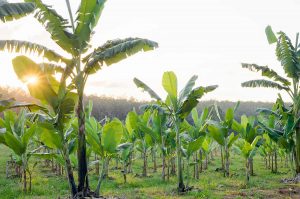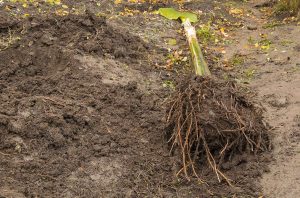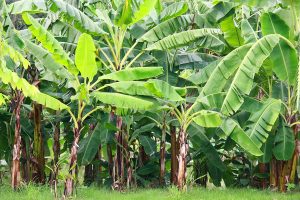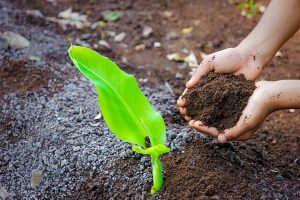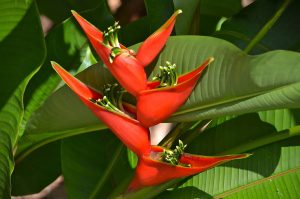Ornamental banana plants are native to jungle habitats in the tropical regions of Asia and Australia. They grow well in warm climates with plenty of sun and moisture, adding an exotic look to the garden landscape.
While ornamental banana plants can produce fruit, this fruit is typically not edible, and instead, the plants are cultivated for their extravagant oversized foliage. Though banana plants are widely referred to as banana trees, they are technically classed as herbaceous plants because they lack a woody trunk.
However, they continue to be commonly known as banana trees amongst some gardeners because they grow to take the shape of a tree.
- Botanical name: Musa sp.
- Common names: Banana tree, Banana plant, Chinese Yellow Banana, Siam Ruby Banana, Stripe-Leaved Banana, Japanese Banana, Scarlet Banana, Pink Banana, Flowering Banana, Ornamental Banana.
- Plant family: Musaceae
- USDA hardiness zone: 5 – 12
- Mature height: Up to 40 feet
- Mature spread: Up to 15 feet
Varieties of Ornamental Banana Trees
Chinese Yellow Banana (Musa lasiocarpa)
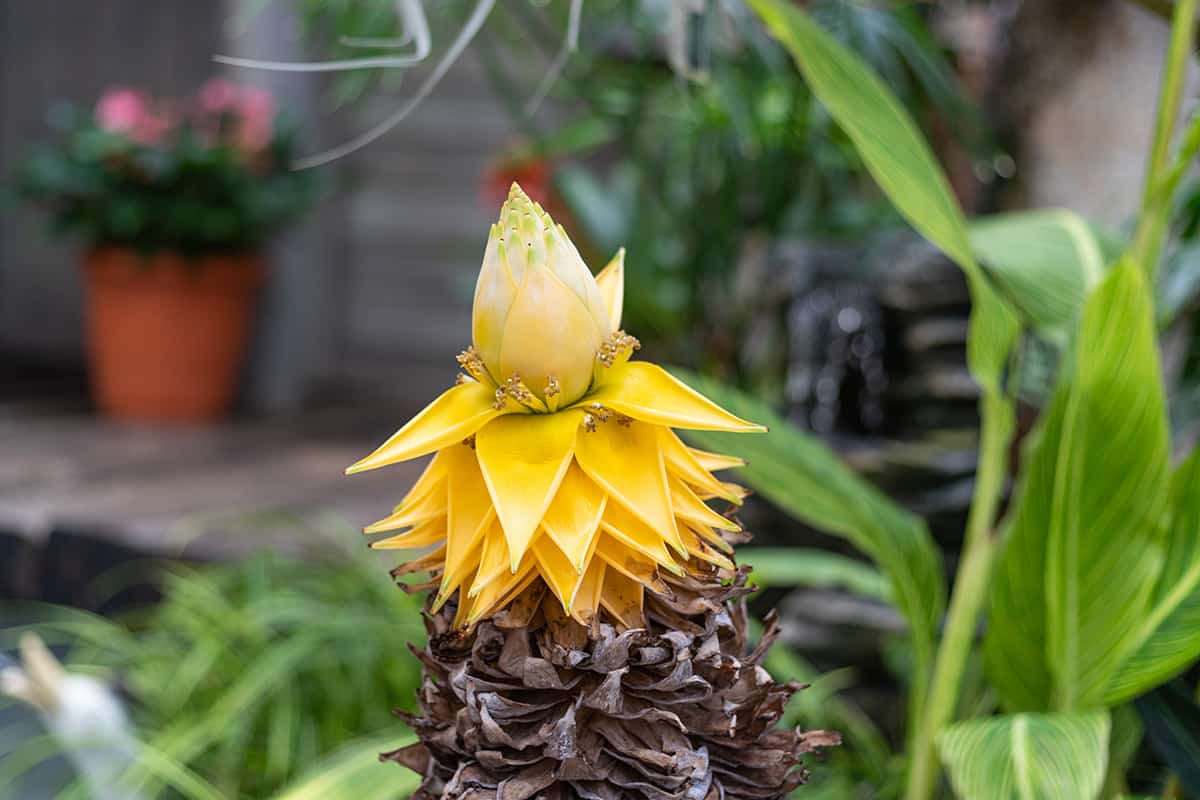
This is a dwarf species of ornamental banana plant which produces 8-inch wide, yellow, waxy flowers in summer, lasting for many months into fall in frost-free climates. The flowers resemble the lotus flower, and as such, the plant also goes by the common name of Golden Lotus Banana.
The Chinese Yellow Banana does not produce fruit and instead dies immediately after flowering. It grows to heights of up to 6 feet, with large dark green leaves of around 4 feet in length.
Siam Ruby Banana (Musa acuminata ‘Siam Ruby’)
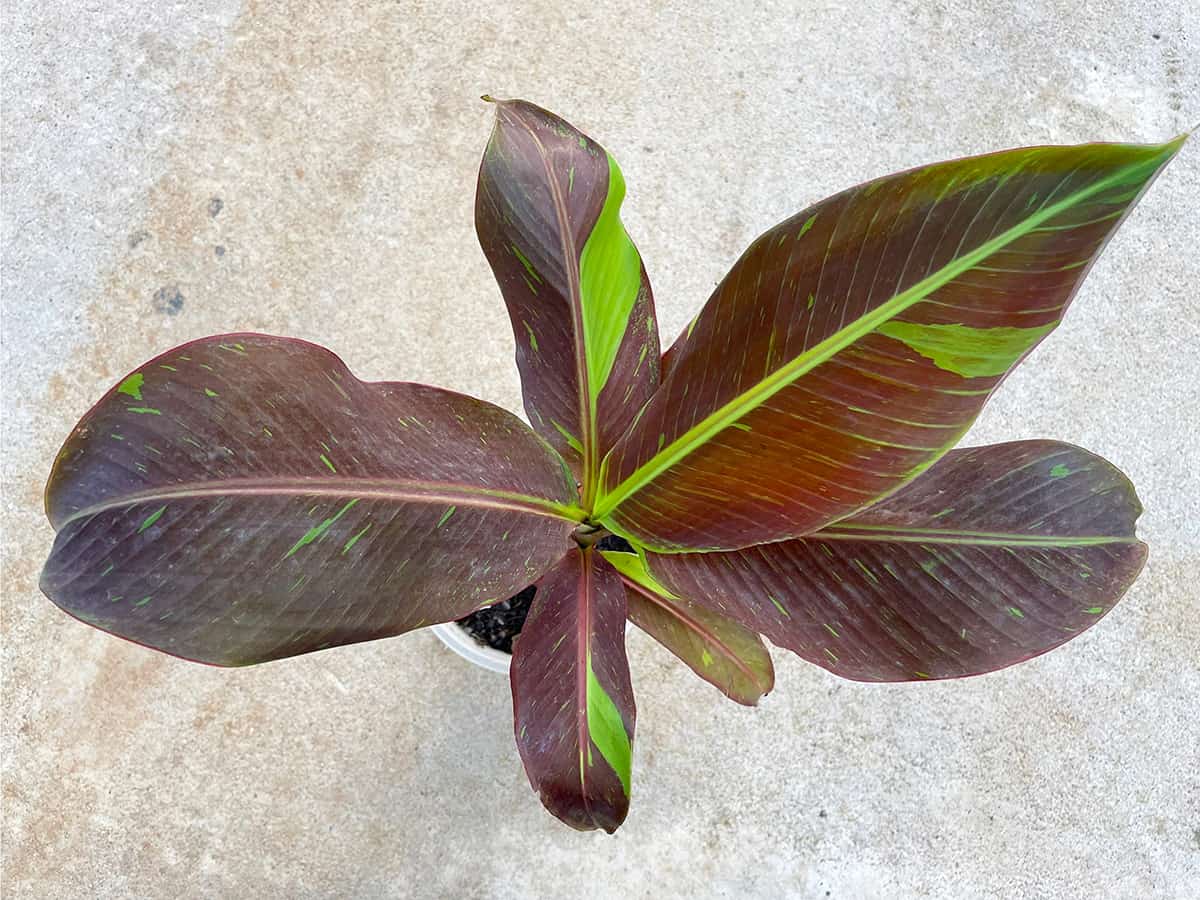
This is a variegated variety of ornamental banana plant which hails from Thailand. It grows to around 8 feet tall, producing green leaves which develop to a rich shade of red-orange which is flecked with shards of lime green.
Stripe-Leaved Banana (Musa acuminata ‘Zebrina’)
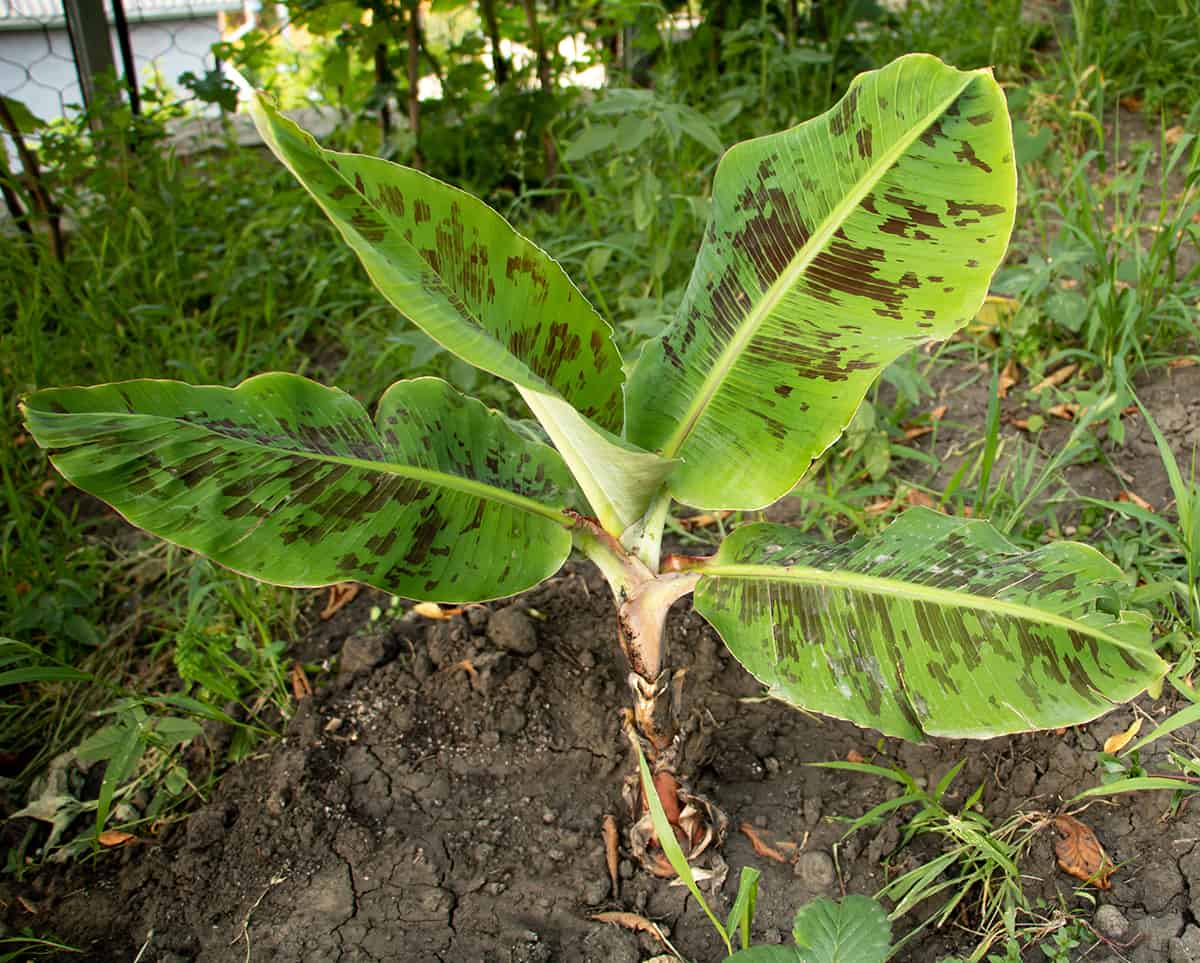
This is a dwarf variety of ornamental banana trees with variegated leaves. The pattern on the foliage is similar to a zebra coat, in shades of purple and light green.
The plant is suitable for growing in USDA hardiness zones 9 to 11 and needs full sun for the most vivid foliage color. The banana tree will produce fruit but it is not edible.
Japanese Banana (Musa basjoo)
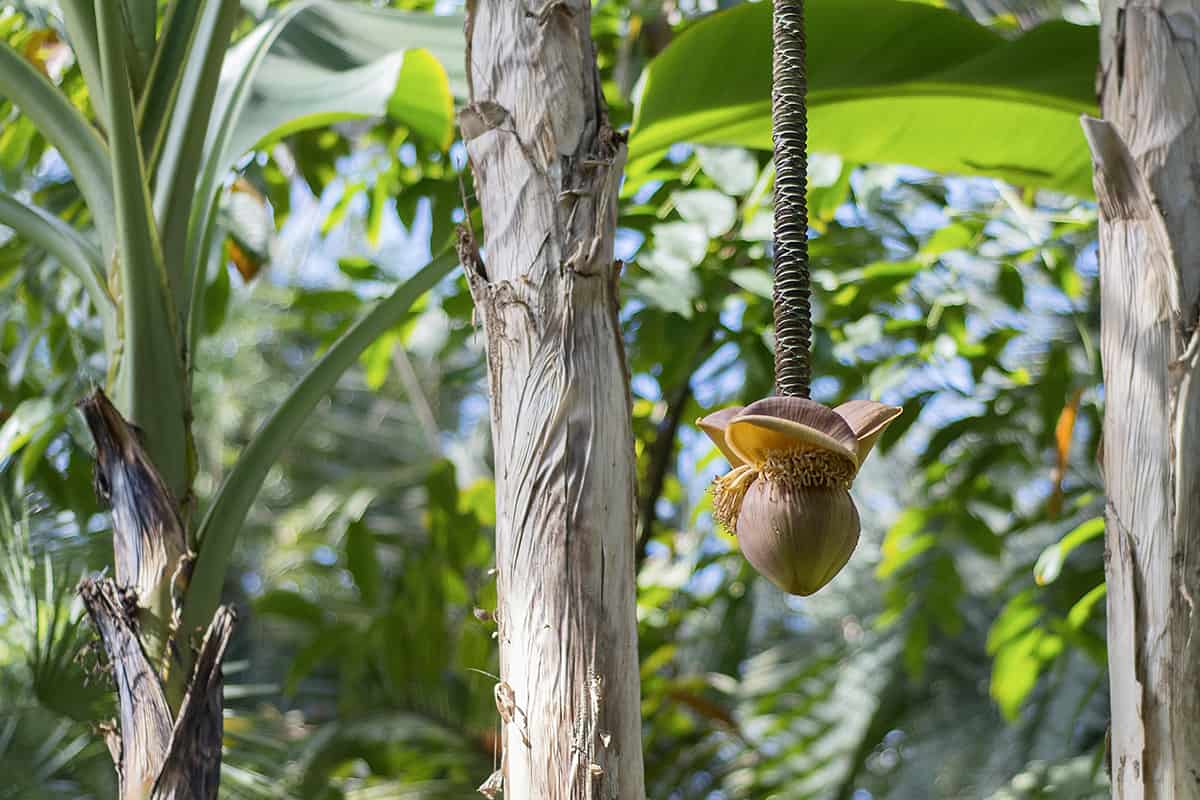
The Japanese Banana tree is in fact native to China, not Japan. It is one of the most cold-hardy of all types of banana plant, being suitable for growing in USDA hardiness zones as low as zone 5. In zones 5 to 8 the foliage of the Japanese Banana plant will die back as a result of frost, though it will regrow the following spring.
In zones 8 to 11 the plant will remain evergreen all year long. The plant does produce edible fruits but it is so densely packed with seeds which makes it unpleasant to eat. Instead, the Japanese Banana is grown for its ornamental value.
Scarlet Banana (Musa coccinea)
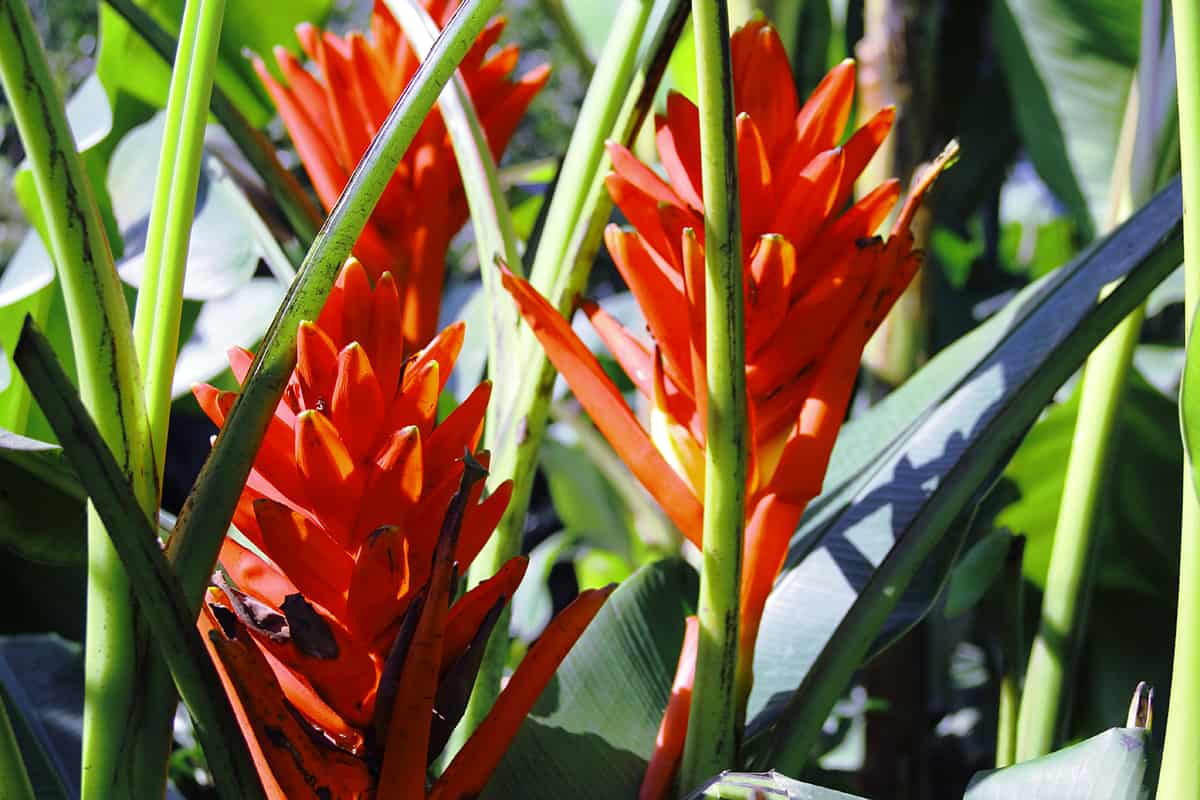
This dwarf ornamental plant reaches heights of just 2 to 3 feet. It is named after the flowers it produces during summer, which are clothed in bright red bracts.
Fruit follows the flowers, which are small, orange, and inedible. The Scarlet Banana grows in USDA hardiness zones 11 and 12.
Pink Banana (Musa velutina)
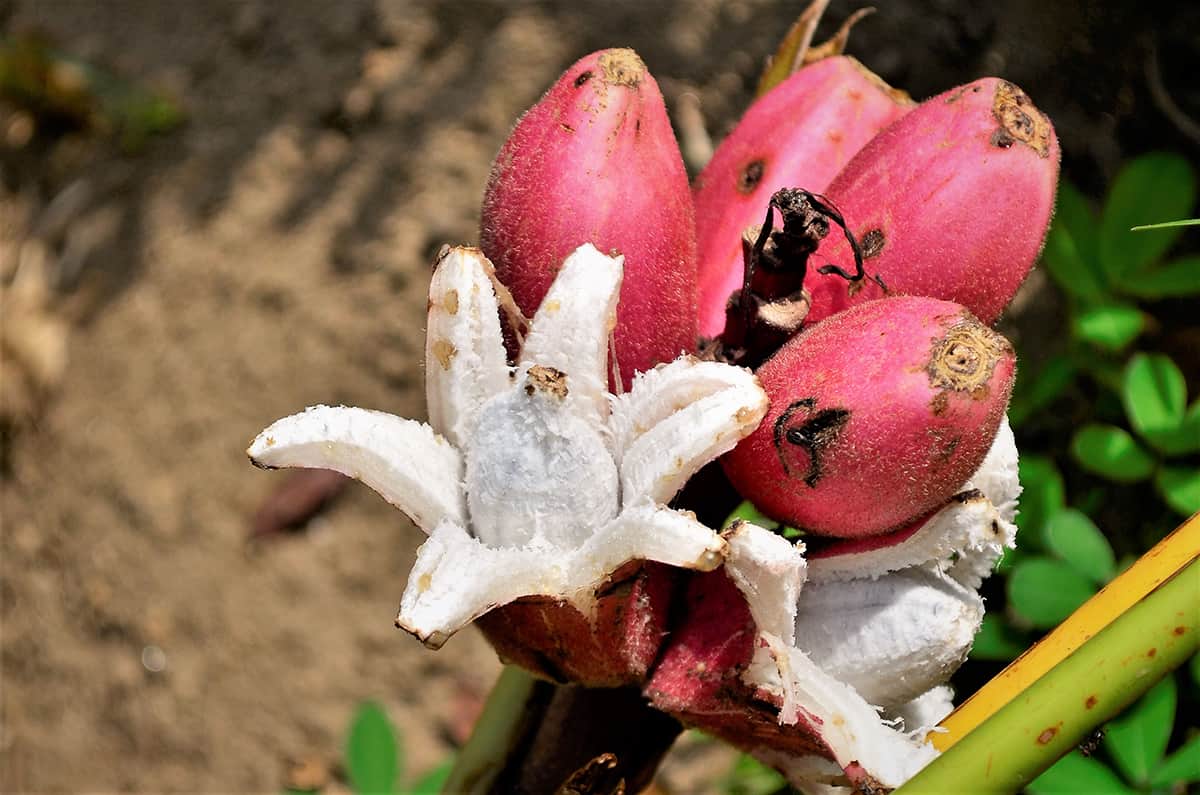
This banana plant is evergreen in warm climates (above USDA hardiness zones 8) but it can also survive in cooler climates, where it will die back to the ground in winter, to re-emerge in spring.
It is named after the flowers it produces, which are enveloped in pink bracts.
Flowering Banana (Musa ornata)
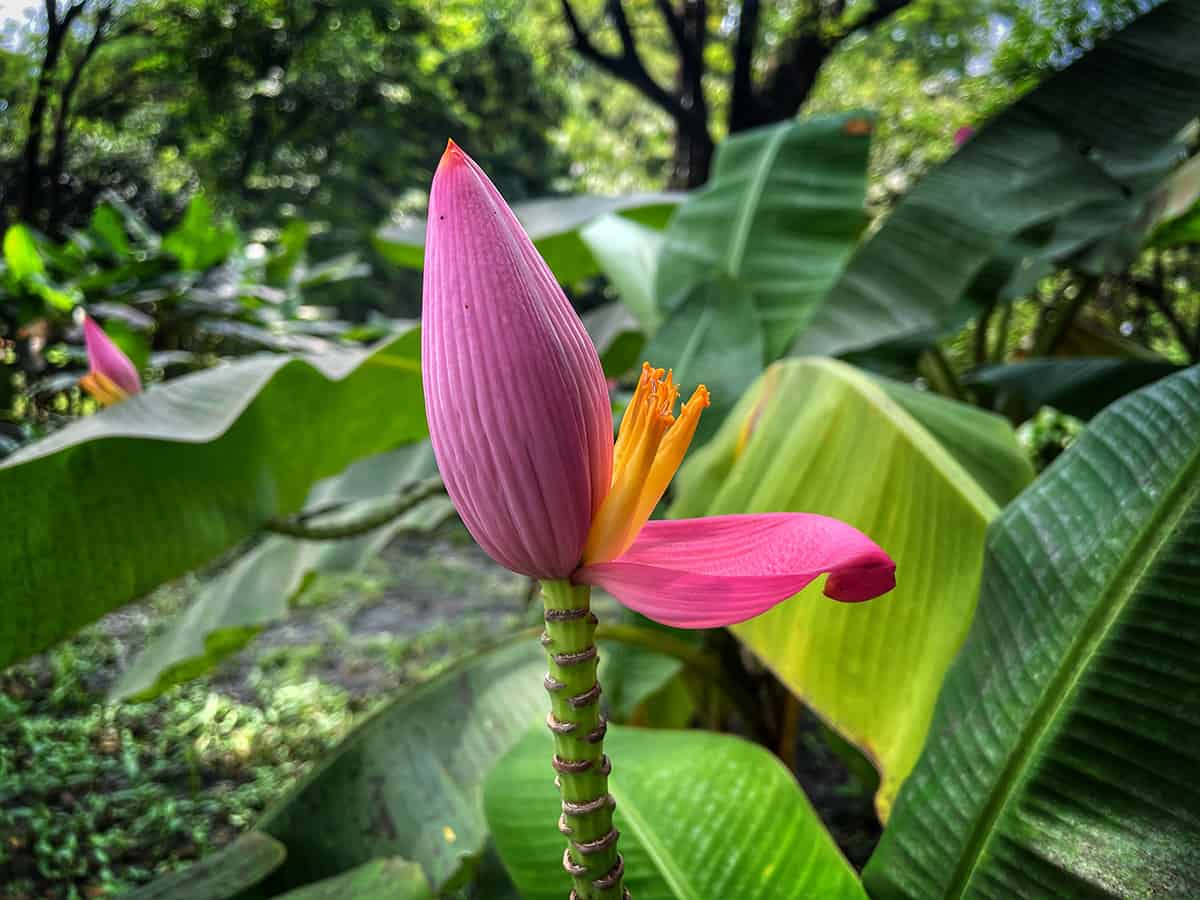
This ornamental banana produces blue-green foliage which spans around 6 feet in length. The flowers arrive on tall, upright stems and are highly ornamental, with rich orange blooms surrounded by vivid pink bracts.
After flowering, fruits are produced by the tree, which is edible but unpleasant to eat due to the presence of many black seeds within the flesh.
How to Care for your Ornamental Banana Tree
The type of ornamental banana plant you are growing may have its own specific set of growing guidelines, however in general most species of banana plant thrive with similar care.
Light
Banana plants are full sun lovers, so they should always be positioned in the brightest spot you have available. This is the case whether you are growing the plant in the garden, or in your home as a houseplant.
Full sun will allow the plant to thrive and ensure that it grows to produce the big beautiful leaves it is famed for. Some ornamental banana plants will tolerate some partial shade, but this is not preferred.
When grown in the partial shade your plant may experience a slower rate of growth or stunted growth. The exception to this is the Scarlet Banana (Musa coccinea), which will thrive in both full sun and partial shade.
Soil
Soil conditions are important for the overall growth of the ornamental banana plant because the type of soil the plant is grown in will have a significant impact on the root growth. A light, well-draining soil is essential for optimum root system development, while also ensuring that any excess moisture is drained away from the roots to avoid root rot.
Soils rich in organic content are preferred, as these will also help the ornamental banana plant to have its high nutrient needs met. Avoid clay soils or compacted soils which will cause the banana plant to produce short, weak roots, as this will have a direct effect on the overall size and health of the plant.
Water
Ornamental banana trees are thirsty plants that need a lot of moisture to sustain their rapid growth. Their soil should not be allowed to completely dry out, so be sure to offer supplemental water when there is no rain.
For indoor banana trees, you can expect to water the banana plant once or twice a week during spring and summer, and this can be dropped down to once every 2 weeks through fall and winter. While banana trees do love to be kept in moist soil, they cannot tolerate waterlogged soil.
Ensuring the soil of the plant drains well will help to provide the ornamental banana with adequate moisture, while carrying any excess water away from the roots. Always check the condition of the soil before adding additional water to ornamental banana houseplants. The top 2 inches of the soil should be allowed to dry out between each watering, and if this does not feel dry to the touch then you should hold off on adding more water.
Temperature
Banana plants are native to tropical regions where temperatures do not drop below a certain point throughout the year, and these conditions will need to be replicated when caring for your own ornamental banana plant.
Different varieties of ornamental banana trees have slightly different minimum and maximum temperatures that they can tolerate, but in general, the vast majority of banana plants prefer to be kept in temperatures that consistently remain between 75 and 95°F. There are some species of cold hardy bananas that can survive in lower temperatures, but even these ornamental banana trees will grow best in warmer climates.
The ornamental banana plants’ love for warm temperatures is one of the reasons why it makes such a good houseplant since the average room temperature in a home is between 70 and 75°F. If you are growing the banana plant in your home, be sure to keep it in one of the warmer rooms on the south side of the home.
This will help the plant’s need for warm temperatures, as well as its requirement for plenty of sunlight, to be met. Never leave the plant in a room which is not heated throughout the winter, as it will struggle if temperatures plummet, even when kept indoors.
Humidity
Banana plants need high levels of humidity to thrive since this is what they are accustomed to when growing in tropical rainforests. The average humidity in a home sits at around 40 to 60 %, depending on the time of year. While this is ideal for household health, it won’t suit the ornamental banana plant.
You will need to increase humidity levels around the banana plant in your home if you want to help it thrive. If you don’t meet its requirement for high humidity, the plant will likely exhibit browning around the edges of the leaf, and separations along the ribs of the foliage.
You can increase humidity levels around the plant by introducing an electric humidifier, using a pebble tray, or spraying the foliage with a water mist bottle. Humidity will also be raised when tropical plants are grouped together, so set the ornamental banana plant amongst other plants in the home.
Fertilizer
Fertilizer is essential for banana plants kept in the home as well as outside. These plants have high nutrient needs, some of which will be met by growing the plants in rich soil, but fertilizer applications will still be necessary.
Throughout the growing season, add a balanced fertilizer formula to the soil every 2 weeks to a month, depending on the fertilizer guidelines. An NPK ratio of 10-10-10 or 16-16-16 is ideal.
